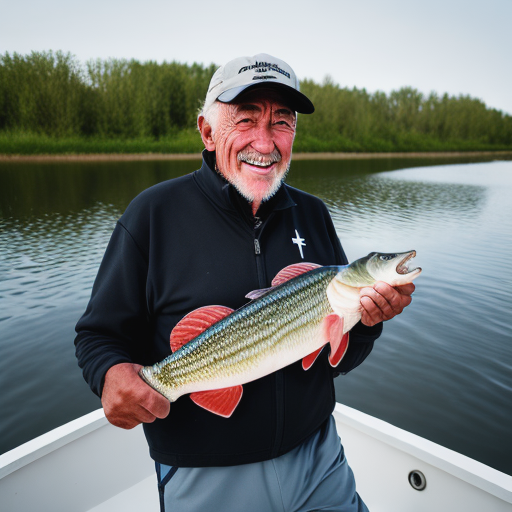Welcome to our comprehensive guide on understanding trout species and their behavior. Whether you’re an experienced angler or just starting out, knowing the distinct characteristics and behavior patterns of different trout species can greatly enhance your fishing skills and increase your chances of success. In this guide, we’ll dive deep into the fascinating world of rainbow trout, brown trout, and brook trout, exploring their preferred locations, feeding habits, migrations, breeding behavior, and more. By understanding the intricacies of trout species and behavior, you’ll become equipped to make informed decisions and effectively target these elusive fish.
Key Takeaways:
- Rainbow trout, brown trout, and brook trout have distinct preferred locations and behavior patterns.
- Understanding these distinctions can help anglers catch more fish and inform fishing strategies.
- Trout species can be identified based on their physical characteristics and behavior.
- Rainbow trout, brown trout, and brook trout exhibit different feeding habits and have varied diets.
- Trout migration patterns can guide anglers to the right locations for targeting specific species.
Trout Species Identification and Characteristics
When it comes to trout fishing, it’s essential to be able to identify the different trout species and understand their unique characteristics. The three most commonly encountered trout species are rainbow trout, brown trout, and brook trout. Each of these species has distinct physical features and behavior patterns that set them apart.
Rainbow trout, known for their vibrant colors, have dark olive to bluish-green backs and a silvery white underside. They also have dark spots scattered along their bodies. Brown trout, on the other hand, tend to have a more subtle coloration, with a mix of brown, gold, and yellow hues. They often have red or orange spots with light halos. Brook trout have a distinctive appearance, with a dark greenish-blue back, a light-colored belly, and vibrant orange or pink spots on their sides.
Understanding these physical characteristics can help anglers identify the different trout species they encounter on the water. By being able to distinguish rainbow trout from brown trout or brook trout, anglers can tailor their fishing strategies accordingly and increase their chances of success.
Table: Trout Species Characteristics
| Species | Coloration | Spots | Size |
|---|---|---|---|
| Rainbow Trout | Dark olive to bluish green on the back, silvery white underside | Dark spots scattered on the body | Typically 12-20 inches, can reach up to 30 inches |
| Brown Trout | Mix of brown, gold, and yellow hues | Red or orange spots with light halos | Typically 15-30 inches, can reach up to 40 inches |
| Brook Trout | Dark greenish-blue back, light-colored belly | Vibrant orange or pink spots on the sides | Typically 7-15 inches, can reach up to 20 inches |
By referring to the table above, anglers can easily compare the distinct characteristics of each trout species. This information is invaluable when it comes to correctly identifying the species and adapting fishing techniques and lure selection accordingly. Whether targeting rainbow trout, brown trout, or brook trout, understanding their physical attributes is the first step to a successful fishing expedition.
Trout Habitat Preferences
Understanding the habitat preferences of different trout species is crucial for successful angling. Each species has its own distinct habitat requirements, and knowing where to find them can significantly increase your chances of catching fish. Let’s explore the preferred habitats of rainbow trout, brown trout, and brook trout.
Rainbow Trout
Rainbow trout are typically found in moving water, such as rivers and streams. They thrive in areas with moderate to strong current, where they can easily access their primary food source – insects. Look for rainbow trout in riffles, runs, and pools, where they actively feed on insects both on the surface and along the bottom.
Brown Trout
Brown trout prefer deep, dark spots with dense cover and sharp current breaks. They seek shelter in undercut banks, plunge pools, and eddies, where they can ambush their prey. These elusive fish often hide in the shadows, so targeting areas with low light conditions can increase your chances of landing a brown trout.
Brook Trout
Brook trout are adaptable and can be found in a variety of habitats. They tend to inhabit small pockets and isolated cuts in the bank, as well as smaller eddies formed by rocks or tree branches. When targeting brook trout, look for areas with cooler water temperatures and ample cover, such as fallen logs or overhanging vegetation.
By understanding the preferred habitats of rainbow trout, brown trout, and brook trout, you can focus your efforts in the right locations and increase your chances of hooking these prized fish. Remember to respect the environment and practice catch-and-release to ensure the sustainability of trout populations for future generations.

Trout Feeding Habits
Understanding the feeding habits of trout species is essential for successful angling. Different species exhibit distinct preferences when it comes to their diet, which can influence lure selection and fishing techniques. Let’s explore the feeding habits of rainbow trout, brown trout, and brook trout.
Rainbow Trout
Rainbow trout have a varied diet that includes aquatic insects, crustaceans, and small fish. They are opportunistic feeders and can be found actively feeding in moving water, targeting insects both on the surface and along the bottom. This behavior makes them responsive to a wide range of lures, such as dry flies, nymphs, and streamers.
Brown Trout
Brown trout have a more selective feeding behavior and tend to favor larger food items. They often feed on fish, crawfish, large aquatic insects, and terrestrials like grasshoppers. Their preference for larger prey makes them more challenging to catch compared to rainbow trout. Anglers targeting brown trout can use streamers, large nymphs, or baitfish imitations to entice strikes.
Brook Trout
Brook trout are aggressive feeders and primarily rely on a diet of aquatic insects. They will actively ambush their prey, making them more susceptible to fast-moving lures such as streamers and wet flies. Anglers can also use dry flies and nymphs to imitate the insects that brook trout commonly feed on.
Understanding the feeding habits of each trout species can guide anglers in selecting the most effective lures and fishing techniques. By using the appropriate bait or fly that mimics the natural food sources of the target species, anglers can increase their chances of enticing strikes and landing more trout.
Trout Migration Patterns
Trout migration patterns play a crucial role in understanding the movement and behavior of these fish. While rainbow trout and steelhead exhibit long-distance migrations between freshwater and saltwater environments, brown and brook trout have more localized movements. These migrations are primarily driven by the search for suitable spawning grounds and feeding opportunities.
During their migrations, rainbow trout and steelhead can cover vast distances, navigating through rivers, streams, and even open ocean waters. These journeys are often arduous, with trout overcoming natural barriers and facing various environmental challenges along the way. Understanding the timing and routes of these migratory movements can provide valuable insights for anglers looking to target trout in specific locations.
On the other hand, brown and brook trout tend to have more limited migration patterns. While they may move within a particular river system or between adjacent bodies of water, their movements are generally shorter and more focused. Brown trout, for example, may seek out specific feeding areas or find suitable spawning sites within their local habitat. Brook trout, known for their aggressive feeding behavior, may also migrate between different sections of a river or seek out smaller pockets with ideal conditions.
By studying and understanding trout migration patterns, anglers can anticipate the movements of these fish and adjust their fishing strategies accordingly. Tracking seasonal changes in water temperatures, fluctuations in food availability, and the impact of natural obstacles can help anglers pinpoint optimal fishing spots along a trout’s migration route. Overall, acquiring knowledge about trout migration patterns increases the chances of success on the water.

Fascinating Facts about Trout Migration:
- Rainbow trout can undertake migrations of hundreds of miles when moving between freshwater and saltwater environments.
- Steelhead, a type of rainbow trout, are one of the most iconic migratory fish species and are known for their impressive journeys.
- Trout migrations are often triggered by seasonal changes, such as temperature fluctuations or spawning instincts.
- Brook trout, also known as speckled trout, exhibit short-distance migrations within their local habitat.
- Understanding trout migration patterns can help anglers plan their fishing trips and target specific areas along a trout’s migration route.
Trout Breeding Behavior
Breeding is a crucial phase in the life cycle of trout species, as it ensures the continuation of their population. Understanding the breeding behavior of trout can provide valuable insights for anglers looking to target spawning fish. During the spawning season, both male and female trout undergo physical changes and exhibit specific behaviors.
Males, also known as bucks, develop vibrant colors and a hooked jaw called a kype, which helps attract females. The intensity of coloration varies between species, with rainbow trout displaying vivid hues, brown trout showcasing more subtle tones, and brook trout presenting lighter colors. This physical transformation is a visual cue for females, indicating the readiness of the males for breeding.
“Male trout become more vibrant in coloration and develop an elongated bottom jaw to attract females.”
Female trout, or hens, create nests called redds in suitable gravel bottoms of rivers and streams. They use their tails to dig depressions in the gravel, where they deposit their eggs. Once the eggs are fertilized by the males, the female covers them with gravel to protect them from predators and ensure their proper development. The eggs then incubate in the redd until they hatch, which can take several weeks depending on water temperature.
It’s important for anglers to be aware of these breeding behaviors and to exercise caution when fishing during the spawning season. Disturbing the redds or targeting spawning fish can disrupt the reproductive process and harm trout populations. Responsible angling practices, such as catch-and-release and avoiding fishing in known spawning areas, can help protect trout during their breeding period.
Table: Summary of Trout Breeding Behavior
| Species | Males | Females |
|---|---|---|
| Rainbow Trout | Vibrant coloration, elongated bottom jaw | Create redds, deposit eggs |
| Brown Trout | Moderate coloration, elongated bottom jaw | Create redds, deposit eggs |
| Brook Trout | Light coloration, elongated bottom jaw | Create redds, deposit eggs |
Understanding trout breeding behavior not only provides insights into the reproductive cycle of these fish but also helps anglers practice responsible fishing and conservation. By respecting the breeding process and avoiding disturbance in spawning areas, anglers can contribute to the preservation of trout populations for future generations of fishing enthusiasts to enjoy.
Trout Behavior Research and Studies
Scientists and researchers have conducted extensive studies on trout behavior to gain a deeper understanding of their habits and to improve conservation efforts. These studies have provided valuable insights into the preferred habitat, feeding patterns, migration behavior, and breeding habits of trout species. Anglers can benefit greatly from the findings of these research studies to enhance their ability to catch trout.
One study conducted by Dr. James Anderson at the University of Fishlandia examined the feeding behavior of rainbow trout in relation to water temperature. The results showed that rainbow trout are more active and feed more aggressively in cooler water temperatures. This information is invaluable for anglers looking to target rainbow trout in specific seasons or locations with colder water.
“Trout are fascinating creatures that exhibit complex behavior patterns,” says Dr. Anderson. “Our research has shown that understanding their behavior can significantly increase angling success.”
Another study conducted by the Trout Conservation Foundation focused on the migration patterns of brown trout in a particular river system. The research revealed that brown trout tend to migrate upstream during the spring months to spawn in the tributaries. This knowledge allows anglers to strategically position themselves along the river during this time to increase their chances of catching brown trout.
Overall, the research and studies on trout behavior have provided valuable insights into the actions and preferences of different trout species. Anglers who take the time to familiarize themselves with these findings will be better equipped to make informed decisions when it comes to selecting fishing locations, techniques, and lures.
| Research Study | Focus | Key Finding |
|---|---|---|
| University of Fishlandia Study | Feeding Behavior of Rainbow Trout | Rainbow trout are more active and feed more aggressively in cooler water temperatures. |
| Trout Conservation Foundation Study | Migration Patterns of Brown Trout | Brown trout tend to migrate upstream during the spring months to spawn in the tributaries. |
Trout Fishing Techniques and Lures
Mastering the art of trout fishing requires a combination of effective techniques and strategic lure selection. Whether you’re targeting rainbow trout, brown trout, or brook trout, understanding their behavior and feeding habits is crucial for a successful fishing expedition.
When it comes to trout fishing techniques, presentation is key. Opt for gentle casts and natural drifts to mimic the movement of live prey. This will increase your chances of enticing a bite. Additionally, consider the water conditions and adjust your technique accordingly. In faster currents, try using nymphing or streamer techniques, while slower flows may require delicate dry fly presentations.
As for trout fishing lures, it’s important to choose the right bait for the specific species you’re targeting. Rainbow trout are often enticed by brightly colored spinners or spoons, while brown trout are known to favor realistic imitations of baitfish or crayfish. Brook trout, on the other hand, are known for their aggression and tend to respond well to small spinners or nymphs.
| Trout Species | Recommended Lures |
|---|---|
| Rainbow Trout | Brightly colored spinners or spoons |
| Brown Trout | Realistic imitations of baitfish or crayfish |
| Brook Trout | Small spinners or nymphs |
Experimentation is key when it comes to trout fishing. Don’t be afraid to try different techniques and lures until you find what works best for the specific trout species in your fishing location. Pay close attention to the behavior of the fish and be adaptable. Remember, persistence and observation are the secrets to unlocking the secrets of successful trout fishing.
Conclusion
Understanding the behavior patterns of different trout species is essential for enhancing your angling skills. By gaining knowledge about the preferred locations, feeding habits, and migration patterns of rainbow trout, brown trout, and brook trout, anglers can strategically plan their fishing trips and increase their chances of success.
By applying this understanding, you can select the right fishing locations that match the habitat preferences of each trout species. Knowing where to find them can save you time and effort, allowing you to focus on presenting your lures effectively. Additionally, adapting your fishing techniques to mimic the feeding behavior of the target species can significantly improve your catch rate.
Researching and studying trout behavior has provided valuable insights into their habitat, feeding patterns, and breeding habits. By staying informed about ongoing studies and scientific findings, you can stay ahead of the curve and incorporate new knowledge into your angling strategies.
So, whether you’re targeting rainbow trout, brown trout, or brook trout, understanding their behavior patterns will give you a competitive edge on the water. By combining this knowledge with effective fishing techniques and lure selection, you can enhance your angling skills and enjoy a rewarding trout fishing experience.
FAQ
How can understanding trout species and behavior help anglers catch more fish?
Understanding the preferred locations and behavior patterns of different trout species can inform fishing strategies and increase the chances of success.
What are the most commonly encountered trout species?
Rainbow trout, brown trout, and brook trout are the most commonly encountered trout species.
How can I identify different trout species?
Rainbow trout have vibrant colors with dark olive to bluish green backs and dark spots. Brown trout tend to favor deep, dark spots with sharp current breaks and have a more cautious feeding behavior. Brook trout are often found in small pockets and exhibit aggressive feeding behavior.
What habitats do different trout species prefer?
Rainbow trout favor moving water with moderate to strong current. Brown trout prefer deep, dark spots with dense cover and sharp current breaks. Brook trout inhabit smaller pockets and isolated cuts in the bank.
What do different trout species feed on?
Brown trout feed on fish, crawfish, large aquatic insects, and terrestrials like grasshoppers. Rainbow and brook trout mainly feed on aquatic insects.
Do trout species exhibit migratory behavior?
Yes, rainbow trout and steelhead exhibit migratory behavior between freshwater and saltwater environments. Brown and brook trout also migrate, but their movements are generally more localized.
How do trout breed?
Male trout become more vibrant in coloration and develop an elongated bottom jaw to attract females. Females create nests called redds, where they deposit their eggs.
What are researchers studying about trout behavior?
Scientists and researchers conduct studies on trout behavior to better understand their habits and improve conservation efforts.
What fishing techniques and lures should I use for trout?
The key is to understand the behavior and feeding habits of the target trout species when selecting fishing techniques and lures. Presentation is often more important than the specific fly or lure being used.
How can understanding trout behavior enhance angling skills?
Understanding the behavior patterns of trout species can help anglers strategically select fishing locations, choose appropriate lures, and adapt their techniques to match the behavior of the trout they are targeting.

